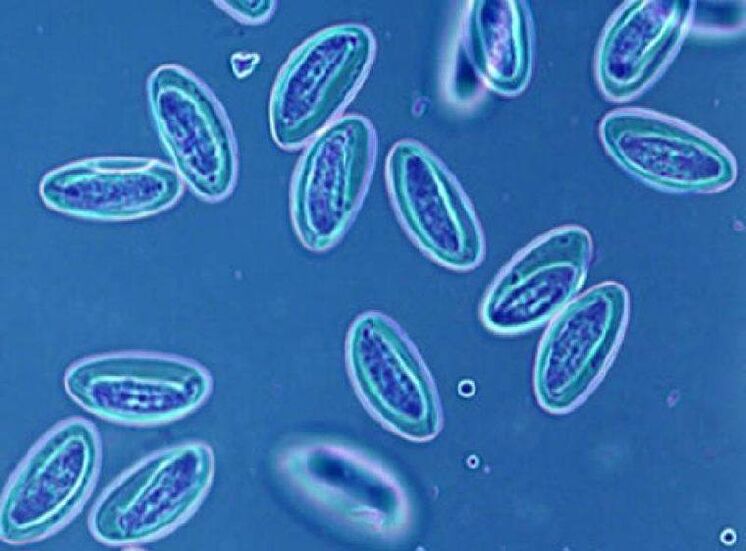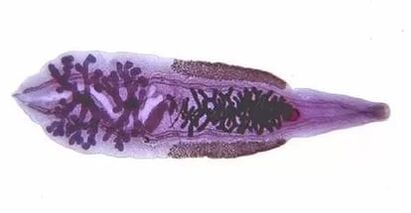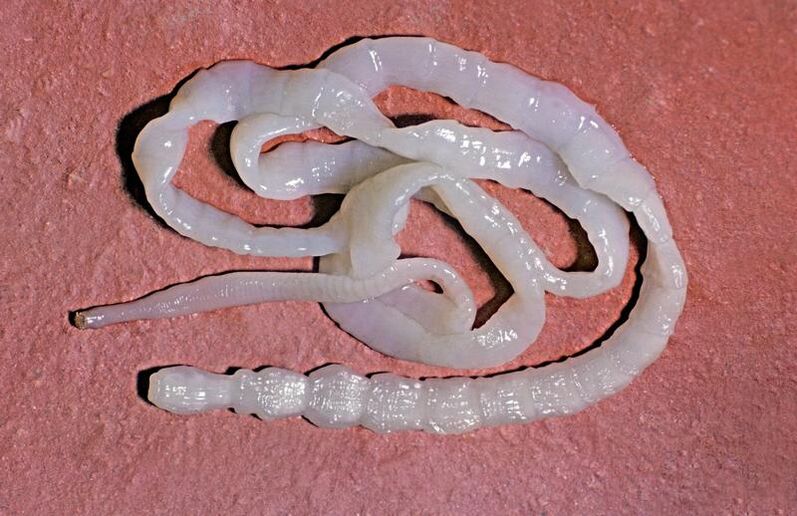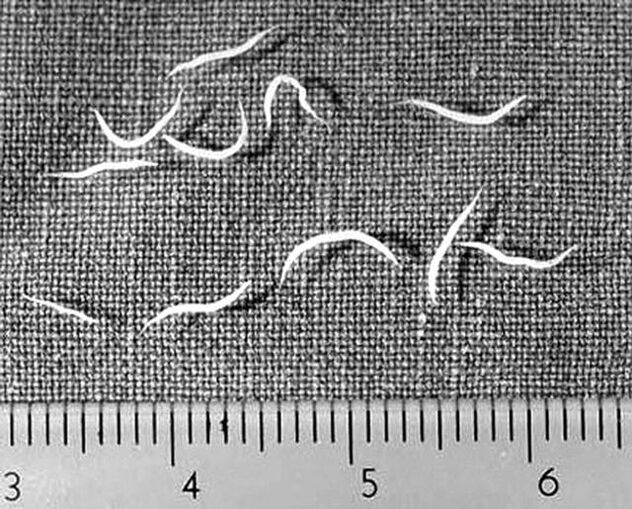
Worms are one of the most common diseases in children and adults.In the human body, various types of worms can parasitize.There is a view far from medicine that worms only affect the digestive tract, and in fact, worms can parasitize in almost all internal organs - the liver, lung, heart, brain, as well as muscle tissue, subcutaneous tissue and eyes.This article refers to a human worm.
Classification
There are a large number of worms that can hit a person, and the following are the most common ones.Most worms belong to any of three groups - three groups, cestodes, or nematodes.
Trematodes are a type of flat-shaped parasite, with about 40 surprising worms.The most common ones are:
- cat or Siberian double fruit (causes sticky problems);
- Schistosoma (causes schistosomiasis).
Cestodes are ribbon planar worms.Cestodes represents no digestive system.Most often, one is surprised:
- Bull tapeworm (causing trastula);
- Pork tapeworm (causing bladder);
- Echinococcus (causing echinococcus cosisosis).
Nematodes are round worms, mainly nonsense.Common worms that affect the person:
- pinworm;
- Askarides;
- Vrashv.
Worms in humans are symptoms in the photos (most worms affect the gastrointestinal tract, thus nausea and vomiting, diarrhea or constipation, intestinal obstruction, harmless weight loss, lack of appetite or excessive hunger):
Koshachi or Siberian Double Orchard

Koshachi or Siberian Bicarry - a small parasite in a group of liver suction cups.The cause of this disease.In the length of the Cat Double Mileri, it reaches 8-18 mm with a width of 1.2-2 mm.Parasites develop in the organisms of two owners – intermediate and ultimately.The middle owner is mollusks, carp fish, the last person.
Eggs fall into fresh reservoirs along with feces from infected people and animals, where molluscs are swallowed.In the body of a mollusc, the eggs reach an invasive stage - the cervix, the cervical spine leaves the mollusc and is introduced into the carp's body, or enter its organism while the mollusc is eating the fish.In the main body of Pisces, the parasite develops into one meter in the cyst, and its size reaches 0.17-0.21 mm.
While eating, the infected fish is infected by a person and the cyst leaves the instrument inside him, which they pass from the stomach and intestine to the liver and bile ducts.In these organs, they remain parasitic and after 10-12 days they reach the stage of sexual maturity and begin laying eggs.In the human body, a cat's two-year-old can parasitize for up to 10-20 years.
Blood clots
Schistosoma schistosomiae is a blood dish.This is a separate servo with a length of 4-20 mm and a width of 0.25 mm.The body of the spirochete is equipped with a second suction cup - the mouth and abdomen, which are close to each other.Schistosoma women are longer and thinner than men.There is a longitudinal groove in the male body and he holds the female.Their eggs are 0.1 mm in diameter and are oval in shape, and on the surface of one of the rods is a large spike.
In the role of the final owner, the human worms of blood clots choose humans, in their organisms, they are parasitized in small veins of the colon, abdominal cavity, uterus, bladder.Worms feed on blood and partially absorb nutrients through their epidermis.Schistosoma schistosomes are transported to the intestine and bladder, where they mature and stand out in feces or urine.In freshwater waters, larvae emerge from eggs, with the intermediate host being molluscs.In the body of molluscs, cereus methoclase develops into a fissure within 4-8 weeks.
Cow cone

Cattle chains are banded parasites that cause teeniarinchosis disease.These are giant worms that can grow up to 3-12 meters long.The parasite has a small head, a diameter of up to 3 mm, a neck and about 1,000 segments.After entering the human body, along with the unprocessed heat-infected meat, some intestinal walls with 4 inhalation cups are connected to the intestinal wall.
In the hermaphrodite fragments, the worm eggs are laid, and one person lays up to 600 million eggs every year.If not promptly treated, this worm is a gut parasite in humans for 20 years or more.
Pork tap
Like a bull, the pork tape worm has 4 suction cups, but in addition to that, the worm's body is equipped with double hooks.The length reaches two to three meters.The ovary of the pork tapeworm has a three-mixed ovary, with 7 to 12 branches on both sides of the uterus.One characteristic of this worm is the ability of segments to crawl out of the anus.Once the outlet is exported to the external outlet, their shells dry and break, so the worm eggs enter the external environment.The middle master of the tapeworm can be a pig and a person.
The main owner is one person.Human intestinal parasites include pork tapeworms, which are located in the patient's intestines, where he lays eggs.When invasive meat is used, an infection occurs.
echinococcus
The etiology of echinococci disease reaches 3-5 mm in length.It consists of a head with four sucking cups and two hooks, and three - four sections.The last segment has developed reproductive systems.The middle owner is a livestock or a person, and the final owner is a dog or a wolf.Infection occurs as an oral route.
echinococcus enters the intestine and the larvae emerge from the eggs.With the help of the hook, the larvae penetrate the system of the gate veins, from where they are spread along with the blood into the liver, light, muscle tissue.
Speaker

Tips - Round worms, pathogens of gastrointestinal diseases, diseases of dirty hands.To a large extent, childhood infections are affected by children.Infection occurs orally and in contact with family.You can find these worms in the feces.
The length of the rudder of the genus PIN genus reaches 5-10 mm for women and -3 mm for men.The body shape of the PIN worm is spindle-shaped milky white.The ends of the female body are slightly sharp.Adult worms parasitize in the lower part of a person's large and large intestine, connected to the wall with the help of head vesicles.To lay eggs, the female of the pinworm enters the rectum, crawls out and lays eggs in the anal area, and then dies.After 4-6 hours, the delayed eggs become invasive.Life expectancy of Pinworms - one - two months.
Askarids
Askarides is another representative of the circular worm category - parasites, asworm pathogens.These worms are pale yellow-pink, each with slender spindles of metaphorical shapes.Assaride females grow to 20-40 cm and males reach 15-25 cm.Every day, an adult female assarida egg lays over 200,000 eggs, standing out with human feces, and they become invasive after 12-14 days.
The human body is parasitic in the gastrointestinal tract and is mainly located in the small intestine.The complete development cycle from invasive eggs to maturation takes about 3 months.
Frashv
vlasodgov - a round worm that causes trine encephalopathy.The helmsman is a thin brown nematode with a thin front end and a rounded front end.Women with Blazo heads grow to 3.5-5.5 cm and males grow to 3-4.5 cm.The larvae of a human worm are located in the cecum, where they parasitize until puberty, and eggs are placed there.With a large amount of invasion, the helmsman can also occupy the large intestine, including the rectum.
Every day, women at Blazo-Head produce 35,000 eggs.The helm egg has a barrel-shaped shape covered with a thick brown shell with a colorless "cover" located on the pole.Eggs fall into the soil along with the defecation volume of the main owner, and under favorable conditions, they can maintain invasive performance for up to two years.The duration of human intestinal parasitism is 5-7 years.

























